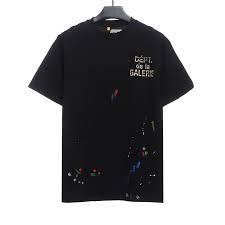The difficulty arises from the subjective nature of whether or not knock off shoes are worth purchasing in terms of quality, ethics and long term value. Although fake shoes are generally much cheaper up front — often sold at 50 -70% less than real versions, there is a price for the savings. For example, a fake YEEZY replica might be priced at $60 compared to the original's retail price of $220; however they lack in terms of material quality and overall comfort which pales in comparison with what you get from the real ones.
Fake shoes are typically made with cheaper materials and shoddier manufacturing processes, which makes over-all quality lower than their more legitimate counterparts. Counterfeit sneakers often use low quality synthetic materials to replicate the look of premium material found in Nike, Adidas and Jordan type athletes performance shoes. Counterfeit shoes often have a lifespan of 50% to that of authentic ones according to research studies. You can simply tell the difference by recognizing that fake shoes will last a few months and their soles might crack because those fakes are not well made, while a real shoe should typically have 1-2 years of life when using regularly.
Athletic shoes also present another challenge with performance. Markets such as Nike and Adidas invest millions in study of the stranding, conception just what optimal amount abilities a shoes need of cushioning or support might have to be breathe. Artificial shoes, without these technologies not only have bad arch support but also cushioning and grip. If used for an extended period of time, fake shoes can cause discomfort or even injury to athletes and regular gym-goers.
When you buy fake shoes, it supports illegal activity and unethical labor practices. It is connected with dangerous working conditions as well, which everyone from child labor to sweatshops being utilized in its production. In doing so, companies are able to steal thousands of jobs from legitimate businesses costing the latter billions and them stifling innovation. Fake sneakers probably accounts for a large percentage of this illicit trade, and industry experts estimate the global counterfeit market is well over $500 billion in value.

Fake shoes can have health and safety risks as well. Other reports indicate that the fake stuff can be made with hazardous materials likeadhesives and dyes. Over time, these can irritate the skin or cause serious irritation—to an extent of allergic reactions—sometimes even leading to breathing trouble. Safety tested and Quality Controlled – Reputable brands safety test their products to make sure they meet health and safety standards which is something a lot of the knockoff makers cut corners on completely.
Then, the resale value is dead horse. Rare sneaker models, especially original items and different colorways, often appreciate prices along the way. A rare Air Jordan can go for more than $1,000 in the aftermarket and return a profit exceeding 500%, as we often see with Jordans on eBay. As soon as one chip of their paint chips away they lose all resale value and transform into a pair of unwearable toys.
There is the debate best pinned down by one quote from a top-line sneakerhead: "You get what you pay for." These counterfeits may resemble the genuine one in appearance, but they are never at par with them on quality levels or comfort..or even sheer long term value. In practice, one might argue that the experience of many with poorly made shoes is not dissimilar to this perspective — e.g., they have fading memories of non-sustained purchases; lack and depreciating economies.
After all, the price of fakes can sway certain shoppers to opt for their aesthetic without the high costs. The quality, durability and ethics trade offs are not a long term investment. Ultimately, spending a little more for the real deal often leads to a better product and experience as well as peace of mind — while sidestepping all you risk losing with counterfeits.